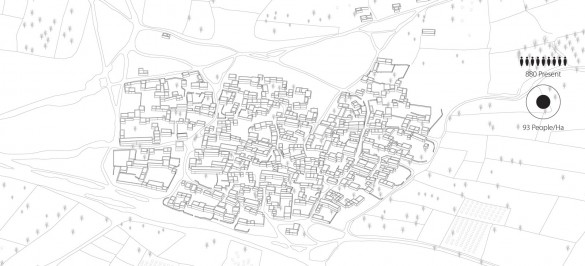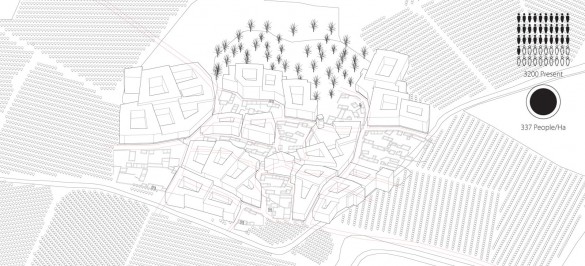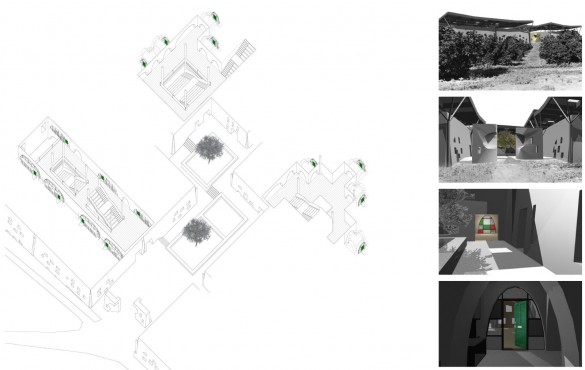Extracts from “Identity: Exile & Return”
by Ahmad Barclay

Here, the architectural dimensions of a built return are developed through the interrogation of Miska, a single Palestinian village depopulated during the 1948 Arab-Israeli War and subsequently destroyed.
The spatial narrative of ‘Re-Emergence’ frames return as the product of pre-existing and ongoing spatial practices linked to both the site of dispossession and the site of exile. Considering how these processes might begin to reconcile the conflicting forces of ‘erasure’ and ‘memory’, and ultimately reshape the concrete built form of the village.



The urban grain of the village is formed in a dialogue between the original layout of the family plots and a choice made by each exiled family, whether to return or to remain absent.

In addition to the macro scale – the village masterplan – the narrative of ‘Re-Emergence’ is also explored at the micro scale, through the development of an architectural scheme for the primary school on its original site to the northwest of the village.


(Content published on arenaofspeculation.org with permission from the author.)